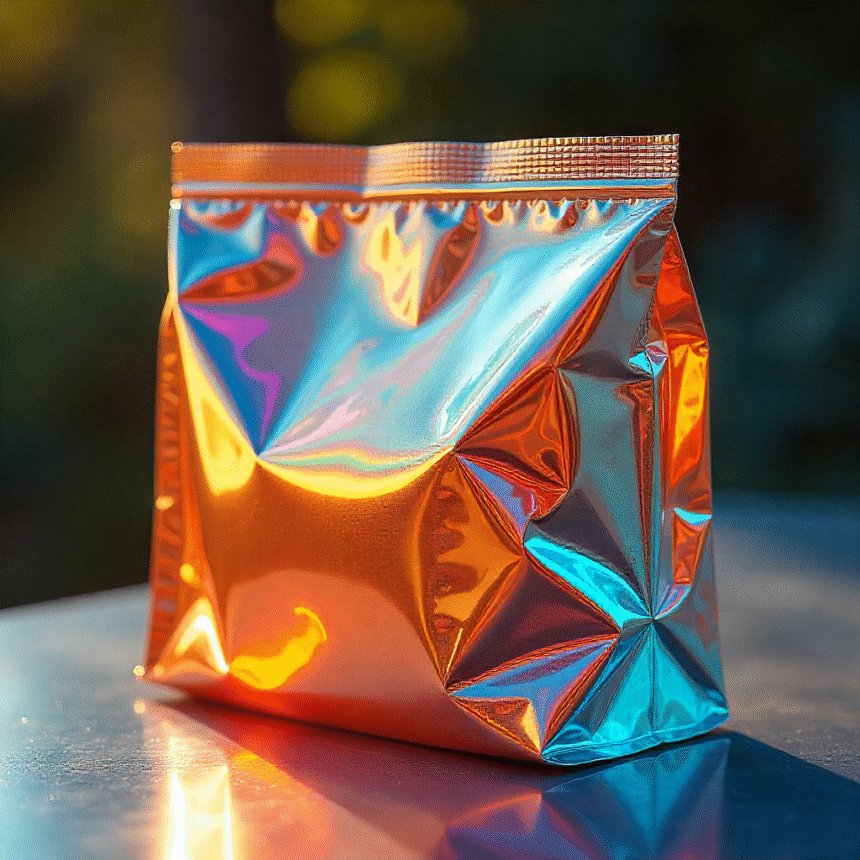When it comes to packaging, even a small choice can alter how well your product is perceived on the shelves. Let’s take size as an example. If your mylar packaging is over-sized, then it would hold its own on the shelves and look hideous. Also the excess void space will result in to and fro movement of product inside the package that would increase the chances of damages. So, only choosing the right size is essential to ensure safety as well as great looks of your product.
Likewise, material thickness of mylar also plays a crucial role in maximizing the storage capacity as well as protective qualities. We know mylar is a shimmery material known for its impressive barrier properties against external factors. The thickness of your Mylar can significantly impact durability as well as cost-effectiveness, and even how well your product is freshness retained.
In this article, we’ll explore the different Mylar thickness options, helping you make informed decisions so you can pack your products securely and perfectly. But first, let’s start from the basics like what is mylar packaging, what are its benefits, the role of material thickness in mylar packaging, and how varied thickness apply to different industries.
What Is Mylar Packaging and Its Benefits?
The core material used in the production of mylar bag packaging is, well, Mylar. It is a protective plastic film that is opaque. Meaning it doesn’t let moisture, air, and dust to pass through. And packaging made from this type of protective material becomes a secure haven for multiple products that can lose their quality due to such factors.
Mylar material was first introduced in 1950 by DuPont and over time it has gained enough popularity among businesses who want to protect their sensitive or consumable products.
Nowadays, we can see custom mylar bags in different shapes and sizes on the shelves displaying a variety of products like ketchups, granola bars, pharma products, and more. The food industry is benefiting the most by using mylar bags. The barrier properties of mylar packaging help to maintain the aroma, taste, and freshness of their edibles.
On the other hand, printed mylar bags make your products look unique among other items on shelves, impart necessary product details, and make your brand stand out.
What Does Thickness Mean?
To understand about thickness, let’s take an example of a school notebook cover. Some notebooks have thin covers, while others have thick, strong covers. The same idea works for Mylar bags, some bags are thin, while others are thicker.
Thickness means how thick or thin a Mylar sheet or bag is. It is usually measured in mils, that are very small units. A thicker Mylar bag is stronger and protects the product better, but it might cost a bit more.
Does Thickness of Mylar Bags Matter?
You might wonder, “Why can’t we just use one thickness for everything?” Here are some reasons why thickness is important:
- Product Protection
Thicker Mylar bags are tough and hard to tear. If your product is heavy or sharp, it needs a thicker bag to avoid ripping. For light or soft products, thinner bags might work just fine.
- Keeping Freshness
Some dried goods, dry fruits or coffee can lose freshness when exposed to air or moisture. Thicker Mylar bags have better barrier properties than thin ones. Meaning little to no air and moisture can pass through, keeping food fresh for longer.
- Cost
Thicker Mylar bags cost more to produce due to more material being used. If cost saving is your business goal, then you should choose tin mylar bags that still protect from environmental factors.
- Weight
Thicker bags weigh more. This can give a boost to your overall shipping costs. Sometimes, lighter bags save money on postage or delivery.
How to Determine the Right Thickness for Your Product?
When choosing the appropriate thickness for your custom printed Mylar bags no minimum, keep the following question in mind.
What is Inside the Bag?
- For soft and light items, you can use thinner bags.
- And for heavy or sharp products, use thicker bags to avoid tearing.
How Long You Need to Store the Product?
- If your product wants extended shelf life, thicker Mylar is better.
- For products used quickly, thinner bags might be enough.
How Much Budget Can You Allocate?
- Thicker bags cost more.
- If you want to save money then choose thinner bags.
Examples of Choosing Thickness
Let’s look at some examples to make this clear:
Example 1: Spices or Tea
If you sell tea or spices, your product is light and not sharp. A 2 or 3 mil Mylar bag is enough to keep freshness and protect the product. It also keeps your costs low.
Example 2: Coffee or Dried Fruit
Coffee needs to stay fresh and dried fruit can be a bit heavy. A 4 or 5 mil bag is great because it offers better protection against air and moisture.
Example 3: Snack Mix with Nuts and Chips
If your product has heavy or sharp edges like nuts and chips, go for 6 mil or more. This thickness prevents the bag from tearing and protects your product during shipping.
Conclusion
We hope to have answered your queries regarding the thickness of mylar bags through this article. After knowing how important it is to maintain the integrity of the containment, you would never compromise on this.
The second step from here would be for you to choose an experienced mylar packaging supplier in the USA that would not only create mylar bags in your required thickness but also assist you in choosing the right one for your product. That’s where we always recommend Print247. They are known to produce top quality custom printed mylar bags no minimum for their customers.
They pay special attention when choosing the right thickness of mylar bags. They first understand the sensitivity of your product then recommend the appropriate thickness. Your needs will be met with diligence by Print247.









